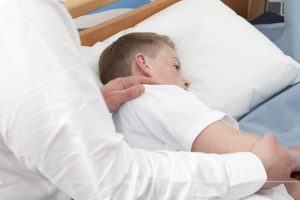The EPUAP and Pressure Injury Prevention
The problems associated with pressure injuries and ulcers can lead to negative patient outcomes and complications which the correct precautions and treatment could prevent. Education about pressure injuries is, therefore, vital for patient care and on November 16th 2017, The European Pressure Ulcer Advisory Panel (EPUAP) hosted the Worldwide Pressure Injury Prevention Day for the fifth consecutive year. The main objective of the Worldwide Pressure Injury Prevention Day is to increase national awareness of pressure ulcers, their dangers and how they can be prevented.
The annual event is recognised by healthcare professionals, governing bodies, hospitals, nursing homes, the media and the public, all around the world. Uniting as one to pursue a common goal of public knowledge in relation to pressure ulcers, the day is set to contribute to the stoppage of these preventable, extremely painful pressure sores. The EPUAP’s annual meeting will be held in Rome this year, looking into how interdisciplinary teamwork and technology can create a better approach to pressure ulcer management.
What are pressure ulcers and why do they occur?
Pressure ulcers are injuries to the skin and/or underlying tissue, predominantly caused by prolonged pressure on the skin itself. This leads to a lack of blood supplied to the specific area, causing the tissue to die and the onset of a painful pressure sore. Localised damage is most likely to develop on skin that covers bony parts of the body, such as the hips, elbows, heels, tailbone and shoulders.
As pressure injuries often occur when a person spends a significant amount of time either sitting or lying down, the bed-ridden, severely ill and disabled are all at a high risk. Care professionals, families and visitors must therefore remain vigilant and strive to recognise the early warning signs, so that pressure ulcer injuries can be stopped before they start.

How can pressure ulcers be prevented?
Pressure injuries can be easily prevented by simple actions that will help to keep the patient comfortable. Below are several suggestions to help reduce the risk of bed sores developing.
- Regular rotation – Patients who are bed-ridden or have a severe lack of mobility need to be regularly repositioned. This can be done either manually, or with a repositioning system such as the Vendlet V5S. Rotation will help to drastically reduce both shear and friction, resulting in improvements to tissue viability.
- Healthy eating & sufficient hydration – To prevent the breakdown of tissues, patients need to ensure they eat a balanced diet that includes a range of vitamins, minerals and protein. Plenty of fluids will also help to promote healthy skin and reduce the likelihood of pressure sores.
- Comfortable positioning – Soft cushioning can help to improve positioning and stop pressure ulcers from forming. At Felgains, we offer a range of bed support cushions, that are designed to manage sleep positioning and reduce the risk of pressure injuries. A greater distribution of pressure will relieve pain and help to encourage the service user’s comfort and relaxation.
- Good hygiene – The skin of a patient needs to be kept as clean as possible to best reduce the risk of pressure sores. Ensuring that the patient’s bed is kept dry and regularly cleaned will also help to prevent pressure injuries.
- Pressure care mattresses – Specialist mattresses designed for pressure care management, such as our foam and air pressure relieving mattresses, are suitable for use in care homes, private homes and hospitals, and will contribute to the prevention and treatment of bed sores.
For any more information about how to recognise and prevent pressure injuries, or if you have any queries about the care products listed above, feel free to contact us today.